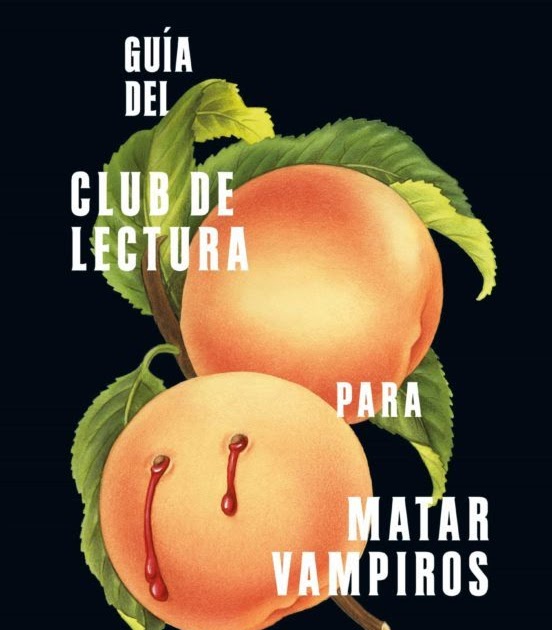
Idioma original: English
Original title: The Southern Book Club’s Guide to Slaying Vampires
Year of publication: 2020
Translation: Paz Pruneda
Valuation: recommendable
Just as every Spanish writer has the right to write a novel about the Civil War or every Swedish writer can write a crime novel where we can discover the seams of the supposed Scandinavian paradise of well-being, every writer of the horror genre has the right to write a vampire novel. At least one (and if it turns out well, better just one); there we have examples as notorious and happy? (I don’t know if it is the most appropriate adjective) as The mystery of Salem’s Lot of the King, or Let me in by Swedish John Ajvide Lindqvist (he killed two birds with one stone). Well, one of the shining stars of the latest batch of the genre, the likeable Grady Hendrix, in his apparently ironic journey through all the topics and horror topics offered us a few years ago his vampire contribution, which, in accordance with his fondness for rather long and apparently humorous titles, could not be simply titled Blood in the suburbs, Bloody Dusk, Bloodthirsty neighbors or any other variant that contained a word with the root “sang-“… Of course, the term “vampires” was included, just in case someone got confused and thought they were reading a cute novel about ladies who meet for tea while talking about romantic literature.
There is some of that, however, except that these ladies do not meet to talk about romance novels but about books of true-crimes and gruesome events in general. And the vampire element, I’ll warn you right away, doesn’t exactly fit the canon we’re used to: instead of a glittering but disturbing foreign count or the mysterious new inhabitants of a rundown mansion, characters who would have been immediately detected and neutralized in the also cute community of Mount Pleasant, on the outskirts of Charleston, South Carolina (where Hendrix himself comes from, so it’s safe to assume he knows what he’s talking about), we find here, and sorry for the spoiler, an attractive guy who blends in perfectly in that environment and even becomes a pillar of the community, a source of income for the families he enchants. At this point we can find one of the possible underlying readings of this novel, which can be interpreted as a metaphor for what the speculative economy, easy and quick enrichment or, why not call it that?, turbo-capitalist greed has caused to the American and even world middle class… (we know something about that in post-crisis Spain, although some have already forgotten it).
Another, more obvious reading, in fact, is that of female empowerment: we are told the adventures of a group of housewives (no proof or doubt that Hendrix had the series in mind). Desperate Housewives when she wrote this novel) from whom nothing else is expected than to keep their homes in order and entertain themselves by reading books -in the case of Patricia, the main character, she was a nurse, but left her career so that her husband could prosper in his as a psychiatrist-, but who end up fighting a supernatural evil force that threatens their families and their community and that, to a large extent, represents the epitome of the prevailing machismo in their society -without forgetting, of course, that their husbands are also gems, in that respect-; the fact that the novel was written by a man does not invalidate this interpretation of it, but, in my opinion, it supports it even more, if possible, because if it were the work of a writer with feminist convictions, it could be attributed an indoctrinating intention that, in this case, is not so evident, being diluted, (although present) in addition, in a story with, at the end of the day, an unequivocal terrifying imprint.
And it is at this point where there may be more dissent about the novel, it seems to me, at least among fans of the horror genre, because although this is a work, without a doubt, belonging to it and we can find in it several passages of overwhelming tension and considerable creepiness, it is true that the author focuses much more on the costumbrista aspects and on the relationship between the characters – especially female – than on the vampire component, in this case, of the story. Which, on the one hand, is convenient to build a solid narrative and, on the other, the fact of leaving the supernatural element of the novel somewhat in mystery does not displease me either, but I can understand that the most conspicuous fans of horror and, above all, of vampires, the novel leaves them a little unsatisfied (because perhaps lovers of the subgenre will be more interested in the novel).empirical there are more women than men, I don’t know).
Notwithstanding the above, believe me when I tell you that Book Club Guide… It is a very entertaining novel, terrifying enough and with an addictive narrative rhythm, which will make it impossible for anyone to put down its more than four hundred pages halfway through. Especially suitable, in my humble opinion, to be discussed in the many reading clubs that, happily, proliferate everywhere and that usually have a female majority among their members. I assure you, girls, that you will never look at that lonely guy who drops by your club from time to time with the same eyes again… ; )
Other Grady Hendrix novels reviewed on A Book a Day: Horrorstör, Final Girls Support Group, How to Sell a Haunted House
Source: https://unlibroaldia.blogspot.com/2024/07/grady-hendrix-guia-del-club-de-lectura.html


